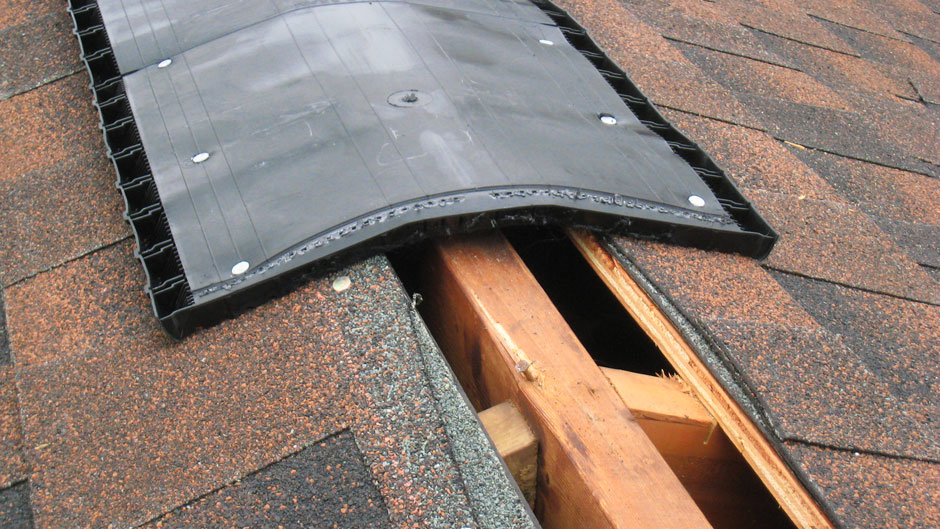Proper attic and roof ventilation extends the life of a roof and removes moisture from the attic. Problems are reduced because it minimizes the temperature differential between the attic and the air outside.
Trapped moisture can raise energy costs, cause ice dams and damage roof system components as well as structural and personal items stored in the attic. Temperatures can easily reach 65 degrees C in the attic without proper ventilation. Condensation that forms inside the attic is also caused by washing machines, dishwashers, bathing, showering and dryers due to inadequate venting. Besides the obvious problems, excess condensation can be mistaken for roof leaks. Here are some tips from Vancouver roofers Kanga Roofing on how to detect problems.

Problems from an improperly vented attic space
1) Sumps between rafters (deck deflection) can happen because after a while a plywood deck can warp or deteriorate becoming spongy and dangerous to walk on. One side of the plywood needs to breathe by exposure to circulating air. Otherwise the adhesive used in the plywood to deteriorate or dry rot can occur.
2) Water vapour will condense first on all metal inside the attic, eventually the metal will rust, the heads of nails, metal plumbing straps or straps holding HVAC ducting. The ducting could possibly crash down on top of a ceiling joist or through a suspended ceiling. These issues are more common in humid climates
3) In colder climates where January temperatures average 0 degrees C and higher inside humidity 40% or above the combination can cause frost to form at the bottom of the roof deck.
4) Insulation can trap moisture reducing the R value of the insulation and create the perfect environment for the propagation of certain molds, spores and fungi which carry their own health problems.
5) Mildew forming is another health issue that can form in this environment.
6) The roof system will deteriorate prematurely.
7) Cooling units will require more repairs and a shortened lifespan due to excessive use.
8) Ice dams are caused by melting snow continually refreezing at the roof perimeter, then backing up under shingles and causing leaks A combination of proper ventilation, heavy insulation and an air barrier can create a cold roof assembly and eliminate ice dam problems.
Types of Vents
Static or power vents, ridge vents, turbine, soffit, cornice, gable, static or cupola each has their own use and some work better than others. Depending on roof configuration, attic size and climate proper ventilation requires intake as well as exhaust vents. Kanga Roofing has the expertise to design the ventilation system to keep your roof worry free for years to come.

